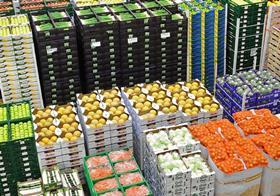
Freshfel Europe today (20 May) hosted its Annual Trade Meeting online, with its Secreteriat offering an evaluation of long and short-term global trade figures for the fresh fruit and vegetables sector. This focused on the European exports, imports and intra-EU trade trends.
During the meeting, Freshfel Europe members expressed their views and insights, and debated local and global produce and trade conditions. Member also highlighted the importance for the fresh produce sector to tackle intra-EU and international trade barriers.
Trends in focus
The analysis of global produce trends showed a positive development for both European and international trade of fresh produce.
According to Nelli Hajdu, Freshfel Europe director for trade and business development, global fresh produce trade reached €100bn in 2020.
In turn, global volumes of fruit and vegetable trade have followed a downward trend since a peak was reached in 2018, down to 87m tonnes of global trade in 2020.
This was down to an overall deceleration in growth of 'booming' categories, which has now been accentuated by Covid-19 pandemic disruptions.
Looking at Europe, fresh fruit and vegetable intra-EU trade volumes decreased by 11 per cent compared with 2019 to 29.2m tonnes, with prices reaching a peak of €1.29 per kilo as a result of strong consumer demand during the crisis.
In turn, EU exports outside of the single market went down to record low levels of 3.9m tonnes, although value continued increasing up to €4.6bn.
Strong demand
“Demand continued to be strong in key non-EU European markets and the partial opening of the Mexican market for some EU produce has opened new possibilities, although export diversification remains low with volumes unable to recover pre-Russian embargo figures,” noted Freshfel Europe trade and market access director Natalia Santos.
“Moreover, several booming markets for EU exports showed a decreased demand in 2020 compared to 2019 due to the COVID-19 pandemic, such as India (-58 per cent), China (-65 per cent), Qatar (-24 per cent), Morocco (-14 per cent) and Egypt (-30 per cent),” she added.
In terms of imports into the EU27, volumes showed a reduction of 5 per cent compared to the previous year down to 12.8m tonnes, with value continuously growing to €14.8bn (+6 per cent).
Most EU suppliers kept growing in the EU market despite the 2020 downturn with India (+45 per cent), Guatemala (+37 per cent), Egypt (+68 per cent), and Peru (+66 per cent) showing the greatest growth rates for 2015-2020.
The Freshfel Europe Secretariat also evaluated the future of fresh produce trade in light of European policy developments, notably the European Green Deal, Farm to Fork Strategy and the recently adopted EU Trade Policy Review.
“It will be essential for the fresh fruit and vegetables sector to raise its voice in the coming years about the importance of boosting fresh produce consumption and trade to attain the UN Sustainable Development Goals and the European Green Deal’s objectives,
especially in relation to a move towards more sustainable, plant-based diets,” said Freshfel Europe general delegate Philippe Binard.
“The sector has a responsibility to continue positioning itself in the circular economy debate and to stress the importance of both local and European production and international supply to secure year-round, diverse and sustainable fresh produce availability for European consumers.”






No comments yet